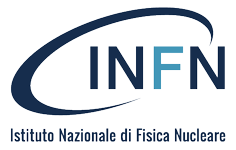In the early 1970s the authenticity of a painting that had been acquired by the American collector Peggy Guggenheim as by Fernand Léger was made questionable when Douglas Cooper, an expert on Léger, expressed his doubts. It is now a certainty that the painting is a fake thanks to a team from the Italian Institute for Nuclear Physics (INFN), who analysed the canvas using carbon 14 dating with a novel approach.
After decades in which scholars, connoisseurs and experts had failed to reach a definitive conclusion about the status of the painting, which has never been exhibited nor catalogued since the Solomon R. Guggenheim Foundation assumed responsibility for the Peggy Guggenheim Collection, the enigma has now been solved using a particle accelerator. The researchers measured the radiocarbon content in a minute fragment of unpainted canvas of the work, believed to be part of the Contraste de Formes series produced by Léger between 1913 and 1914. They then plotted their results against the so-called “bomb peak” curve.
This comparison, used for the first time to ascertain the authenticity of a painting, demonstrated with absolute certainty that the canvas support was produced after 1959, at least four years later than Léger’s death (1955). The research was conducted at the laboratory for the environment and cultural heritage (LABEC) in Florence, in partnership with the INFN’s Ferrara division and the Peggy Guggenheim Collection in Venice, within the scope of the activities of the INFN’s network dedicated to the study and diagnostics of cultural heritage. The study has been published in The European Physical Journal Plus (EPJ Plus).
The bomb peak
During the Cold War, after 1955, a series of nuclear tests were conducted. One of the secondary effects of these was an enormous increase in the level of radiocarbon (C-14) in the earth’s atmosphere. These levels peaked towards the mid-sixties (1963-1965) and then fell again with the signing of various international treaties banning nuclear weapons tests (the first Partial Test Ban Treaty was signed in 1963). Scientists call this phenomenon the “bomb peak”. As the level of radiocarbon in the atmosphere increased, it also increased at a corresponding rate in all living organisms, including the cotton and linen plants used to make canvases for artwork.
The analysis
Experts from the Peggy Guggenheim Collection in Venice obtained a small sample from a folded, unpainted edge of the canvas of the painting in question and sent it to the LABEC in Florence where it was analysed using accelerator mass spectrometry. Physicists measured the level of radiocarbon to establish the date of the canvas (i.e. when the crops used to make the canvas were harvested). This was done by comparing the level of radiocarbon in the fabric with those over the bomb peak period. The analysis revealed a much higher radiocarbon content than there would have been, had the work been an original. There is absolutely no doubt that the canvas was not made before 1959: four years after the death of Léger, who therefore cannot be the author of the painting.
“This is the first time radiocarbon dating has been used to reveal a forgery in contemporary art, by comparing levels of that isotope in the atmosphere during the bomb peak period.” Pier Andrea Mandò, head of the Florence division of the INFN, went on to explain: “After 1955 the level of radiocarbon in the atmosphere, and thus in living organisms, almost doubled in about 10 years. It is due to this rapid change that works from those years can be dated extremely accurately. In this case, it has allowed us to discover that the canvas support could not have been produced before 1959. The work cannot therefore be one of Léger’s original series of Contrastes de forms. Nor is it a later copy by the artist, since Léger died in 1955.”
Philip Rylands, director of the Peggy Guggenheim Collection, expressed his gratitude, also on behalf of Paul Schwartzbaum, former conservator of the museum, to Professor Petrucci ( INFN Ferrara) and the team of INFN-Labec for the success of their research: “After about forty years of doubt surrounding the authenticity of this painting, I am relieved that thanks to the application of innovative scientific techniques, the cloud of uncertainty has at last been lifted and Douglas Cooper’s connoisseurship vindicated.”
Press contacts
Eleonora Cossi INFN press office +39 06.6868162; This email address is being protected from spambots. You need JavaScript enabled to view it.
Maria Rita Cerilli Peggy Guggenheim Collection press office +39 041.2405415; This email address is being protected from spambots. You need JavaScript enabled to view it.







